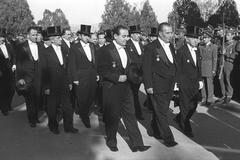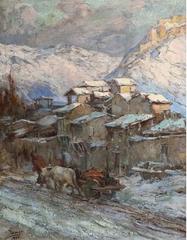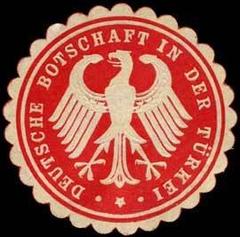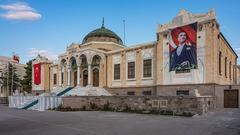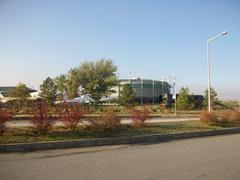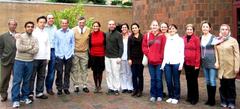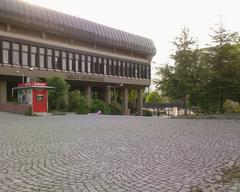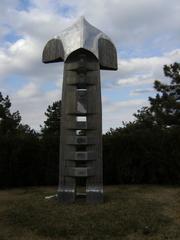Aslanhane Mosque: Visiting Hours, Tickets, and Comprehensive Guide to Ankara’s Historic Gem
Date: 14/06/2025
Introduction: Discovering Aslanhane Mosque’s Place in Ankara’s Heritage
Situated in Ankara’s historic Ulus and Altındağ districts, the Aslanhane Mosque—also known as Ahi Şerafettin Mosque—stands as a remarkable testament to medieval Anatolian Islamic architecture and the Seljuk era’s cultural vibrancy. Constructed around 1290 by prominent leaders of the Ahi Brotherhood, this wooden hypostyle mosque fuses social, religious, and artisanal traditions, reflecting the urban fabric of late 13th-century Anatolia. Its basilica-style plan, wooden columns, and unique Roman-era lion statues embedded in the structure make Aslanhane Mosque both an architectural marvel and a symbol of cultural continuity.
After centuries as a center for worship, education, and community, Aslanhane Mosque gained global recognition with its inscription on the UNESCO World Heritage List in September 2023 as part of the “Wooden Hypostyle Mosques of Medieval Anatolia.” Today, it remains an active mosque and living heritage site, welcoming visitors free of charge. This guide provides in-depth information on its history, architecture, practical visiting details—including hours, accessibility, etiquette—and nearby attractions to enrich your Ankara experience. For official details, see Ankara’s tourism site and iyiturkey.com.
Historical Background and Cultural Legacy
Origins and Seljuk-Era Construction
Built during the late 13th century, Aslanhane Mosque is one of Ankara’s oldest and most significant medieval Islamic structures. The mosque was commissioned by Şerafeddin and Hüsameddin, leaders of the Ahi Brotherhood—a powerful socio-religious guild of craftsmen and merchants that shaped urban life and ethics in Anatolia. Its five-aisle basilica plan and 24 wooden columns, each representing a guild, showcase the integration of social identity and architectural symbolism (iyiturkey.com).
The Ahi Brotherhood’s Social Influence
More than a place of worship, the mosque served as a hub for education, governance, and communal gatherings. The Ahi Brotherhood’s values—solidarity, honesty, and spiritual morality—are embodied in the mosque’s design and function.
Artistic and Architectural Distinction
The mosque’s understated exterior, constructed from rubble stone, conceals an interior rich in craftsmanship. Notable features include:
- A wooden hypostyle hall, supported by 24 intricately carved columns of cedar and native wood.
- A mihrab adorned with turquoise and cobalt tiles, and a finely crafted wooden minbar with mother-of-pearl inlay.
- Two ancient Roman lion statues embedded in the outer wall—giving the mosque its name, “House of the Lion”—symbolizing strength and cultural continuity (ankara.ktb.gov.tr).
Restoration and UNESCO Recognition
The mosque has undergone significant restorations over centuries to preserve its structure and artistic heritage. Its UNESCO World Heritage inscription in 2023 acknowledges its exceptional value and secures its ongoing protection (archiqoo.com; islamreligionguardian.com).
Practical Visitor Information
Visiting Hours
- General Hours: Open daily, typically from 8:00 or 9:00 AM to 6:00 PM.
- Prayer Times: Best to visit outside the five daily prayers, especially on Fridays and religious holidays, as the mosque is busiest then (holidify.com).
Tickets and Entry
- Admission: Free for all visitors; donations for preservation are appreciated.
- Guided Tours: Available via local operators and nearby museums such as the Museum of Anatolian Civilizations.
Accessibility
- Located in the Ulus/Altındağ district, easily reached by public transport (bus, metro, tram).
- The entrance has steps and cobbled surroundings; wheelchair access is limited, but courtyard navigation is possible with assistance.
Dress Code and Visitor Etiquette
- Modest clothing required: cover shoulders and knees; women should cover their hair with a scarf (bluemosque.net).
- Shoes must be removed before entering the prayer hall.
- Speak softly, avoid eating, and respect prayer times.
Photography
- Allowed, but without flash and with respect for worshippers.
- Avoid photographing people without consent; adhere to posted restrictions.
Architectural and Artistic Highlights
Structural Design and Materials
- Plan: Rectangular (about 20 x 12 meters), with five aisles and a higher central nave.
- Materials: Stone and timber, with reused Roman and Byzantine spolia in walls and columns (africame.factsanddetails.com).
Key Features
- Mihrab: Richly carved with geometric and floral motifs, enhanced by Kufic calligraphy.
- Minbar: Modular wooden pulpit, featuring intricate Seljuk geometric patterns.
- Decor: Wooden beams, columns, and doors are embellished with stylized foliage and interlocking polygons; calligraphic inscriptions in Kufic and Thuluth scripts are highlighted with color and gilding.
- Lion Statues: Two embedded Roman lions serve as unique guardians and cultural symbols (holidify.com).
- Minaret: 17th-century addition with polygonal shaft and decorative brickwork.
- Courtyard: Modest walled area with an ablution fountain (şadırvan).
- Lighting: High-set windows create a serene, intimate atmosphere.
Preservation Efforts
Ongoing restoration projects maintain the mosque’s wooden architecture, calligraphy, and original color schemes, ensuring authenticity and longevity.
Enhancing Your Experience: Tips and Nearby Attractions
Tips for Visiting
- Visit early morning or late afternoon for best light and fewer crowds.
- Bring a scarf (for women) and socks for entering the mosque.
- Observe posted signs and staff instructions.
Nearby Sites
- Ankara Castle: Historic fortress with panoramic city views.
- Museum of Anatolian Civilizations: World-class archaeological museum.
- Ulus Market and Ottoman Houses: Traditional shopping and architecture.
Frequently Asked Questions (FAQ)
Q: What are the mosque’s opening hours?
A: Generally open daily from 8:00 or 9:00 AM to 6:00 PM; best to avoid prayer times.
Q: Is there an entry fee?
A: No, entrance is free.
Q: Can I take photos inside?
A: Yes, respectfully and without flash.
Q: Is the mosque wheelchair accessible?
A: Accessibility is limited due to historic architecture; some assistance may be needed.
Q: Are guided tours available?
A: Yes, through local operators and museums.
Q: What is the dress code?
A: Modest clothing; women should bring a scarf to cover hair.
Cultural Etiquette and Practical Advice
- Maintain a quiet, respectful demeanor.
- Use whole-hand gestures, not fingers, to point.
- Avoid showing the soles of your feet or touching heads.
- Men and women pray in separate areas; respect these boundaries.
- Children should be supervised at all times.
Safety and Amenities
- The mosque and neighborhood are generally safe; keep an eye on personal belongings.
- Nearby amenities (cafés, restrooms, hotels) can be found in Ulus and around Ankara Castle.
Conclusion: Experience the Living Heritage of Aslanhane Mosque
Aslanhane Mosque stands as a living monument to Ankara’s rich past, offering insight into Seljuk architecture, the Ahi Brotherhood’s communal legacy, and Anatolia’s artistic synthesis. Its UNESCO status ensures its preservation for future generations. Free entry, a central location, and proximity to other heritage landmarks make it an essential stop for visitors seeking to understand Ankara’s layered history.
For further guidance, consult Ankara Tourism and iyiturkey.com.
Download the Audiala app for curated travel guides, and follow us on social media for the latest updates on Turkey’s cultural treasures.
References
- Aslanhane Mosque Visiting Hours, Tickets, and History – Explore Ankara’s Historic Site, 2023, iyiturkey.com
- Visiting Aslanhane Mosque in Ankara: Hours, Tickets, History, and Architectural Highlights, 2024, africame.factsanddetails.com
- Visiting Aslanhane Mosque in Ankara: Hours, Tickets, History & Tips, 2024, local cultural guides
- Aslanhane Mosque Visiting Hours, Tickets, and Cultural Etiquette in Ankara, 2024, Holidify and TourGoodTravel
- Official Ankara Tourism Page, 2024, ankara.ktb.gov.tr
- UNESCO World Heritage Recognition, 2023, archiqoo.com and islamreligionguardian.com
